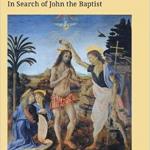The answer to life, the universe and everything is, as is well known, 42. And so this Biblical Studies Carnival falls a little bit short. But if you listen to Ottorino Respighi’s The Festivals of Rome while exploring it, it will all seem just fine. Is it a carnival? A festival? A circus? You, the reader in the audience, will have to decide.
 Let the carnival begin…send in the clowns! What better way to begin a Biblical studies carnival than with a song about body parts in Hebrew? April biblioblogging often begins with April Fools’ Day posts, and Eisenbrauns rarely fails to offer gag gifts for ANE geeks that some of us bibliobloggers would really love to own.
Let the carnival begin…send in the clowns! What better way to begin a Biblical studies carnival than with a song about body parts in Hebrew? April biblioblogging often begins with April Fools’ Day posts, and Eisenbrauns rarely fails to offer gag gifts for ANE geeks that some of us bibliobloggers would really love to own.
We hope that beginning with clowns brought a smile to your face. This month we had some posts on smiling (or the lack thereof) in the Bible: “Why no one smiles in the Bible”by John Hobbins, and “When A Smile May Not Be Just A Smile As Time Goes By” by Duane Smith.
Of course, clowns creep some people out, which may be why some of you aren’t smiling. So what should we parade before you, to change the mood and bring in the fear factor for everyone? How about Demons on a Leash: Habakkuk 3:3b-7 , posted at Ancient Hebrew Poetry? In it John continues his series on Habakkuk, as well as addressing our assumptions about the ontology of evil. Alan Lenzi wrote a not-too-scary post on “Sleep Paralysis in Ludlul II 68-72”. Also, Andrei Orlov provided a comprehensive listing of references to Lilith within Jewish literature.
(By the way, if this doesn’t adequately scare you, come back at the end of the carnival for the freak show).
If the demons get off their leashes, you might suffer like Job. Bob MacDonald has been blogging through translating Job since the time of…well, Job – or at least it seems like it. He also finds himself wondering why Job is seldom references in the New Testament. This month’s posts on Job 8 and Job 12 can be found at Sufficiency.
But we’ll try to keep the frightening bits, and the suffering, to a minimum from this point on. Relax! The carnival is still here to entertain you. Bring in the animals! We present you with: the ‘elephant in the room’!
 A number of blogs have touched on the topic of Biblical (in)errancy: I think I may have started it. Doug Mangum touched on the subject more than once, including in response to Peter Enns, whose own interaction with Bruce Waltke made ripples in the blogosphere. Enns posted links to two pdf files representing his and Waltke’s views. Acrobat files do the work of acrobats in this carnival. Art Boulet notes some reactions to the dialogue. John Hobbins posted on this topic several times, and also provided the soundtrack to the conversation. Mike DeVries chimed in in response to Scott Bailey, while Alan Lenzi proclaimed an Assyrian inscription inerrant.
A number of blogs have touched on the topic of Biblical (in)errancy: I think I may have started it. Doug Mangum touched on the subject more than once, including in response to Peter Enns, whose own interaction with Bruce Waltke made ripples in the blogosphere. Enns posted links to two pdf files representing his and Waltke’s views. Acrobat files do the work of acrobats in this carnival. Art Boulet notes some reactions to the dialogue. John Hobbins posted on this topic several times, and also provided the soundtrack to the conversation. Mike DeVries chimed in in response to Scott Bailey, while Alan Lenzi proclaimed an Assyrian inscription inerrant.
Douglas Mangum of Biblia Hebraica also sought to distinguish apologetic biblical interpretation from 1) understanding the Bible, 2) biblical scholarship, and 3) being “critical”.
Aaron Rathburn blogged at Dust and Light about “The Gospel According to Ancient Near Eastern Culture”, in a 3-part post He first introduces the key components of the cosmological worldview of the ancient Near East, then turns to places we can see some of these phenomena within the canon itself, before finally turning to the significance and implications of these similarities for a doctrine of Scripture. Definitely a post appropriate for the big tent – er, I mean, under the big dome.
 And now, ladies and gentlemen, please turn your eyes towards the trapeeze!
And now, ladies and gentlemen, please turn your eyes towards the trapeeze!
After careful research into what he considers to be conservative evangelical linguistic gymnastics, Duane Smith of Abnormal Interests invented a new name for a method that he feels is prevalent in evangelical interpretation: the “hermeneutic of theologically driven pseudo-linguistic conservation”.
This is a Biblical studies carnival, and so it requires parades.
First, a parade of scholars!
John Anderson, even though gearing up for comps, found the time earlier this month to blog about 15 scholars who have influenced him, as well as to review Kenton L. Sparks, Ancient Texts for the Study of the Hebrew Bible. Art Boulet has been posting a series reviewing Bart Ehrman’s Jesus, Interrupted. So too has Ben Witherington (Near Emmaus has all the links). Bart has also been on parade himself on the Colbert Report.
A highlight in this month’s parade is the amazing hypothetical sleeping scholar. Pat McCullough (not himself the sleeping scholar in question, just to be clear) shared a conversation from a seminar he took on Wisdom and Apocalyptic. It is a thought experiment that helps one think about what has changed in research on apocalyptic literature in the past 50 years or so.
Thanks to Pisteuomen, 68 years’ worth of key scholars in the study of Mark’s Gospel turned out for this month’s parade. And in a blast from the past, Abraham ibn Ezra decided to show up.
Alan Lenzi started a new blog inviting Biblical scholars to present their story of the interaction between their professional interests and their personal religion. Bob Cargill blogged the impressive line-up of scholars at the Duke Conference on Archaeology, Politics, and the Media. And the Biblioblog Top 50 threw pies – I mean, posted pie charts – about who and where in the world bibliobloggers are. The featured biblioblogger for the month was Simon Holloway.
The scholars’ parade is followed by a parade…of ancient manuscripts!
Evangelical Textual Criticism announced the cataloguing and photographing of manuscripts in Athens, while Eric Sowell has been blogging about his experiences there. Peter Head had a post on the relationship between textual and literary criticism. Tommy Wasserman blogged about an SBL session focused on James Royse’s book Scribal Habits in Early Greek NT Papyri. Barry Bandstra posted on an 8th century Israelite inscription (also at PaleoJudaica). Modern software makes comparing manuscripts easier – while raising new issues as well.
We even had a special guest appearance by a famous Arabic text: Pat McCullough noted that approaches from Biblical studies are overflowing into Qur’anic studies. Hermas and Enoch stopped by to say hello, too, as did some folks from Nag Hammadi.
And of course, all these manuscripts are more interesting if you can read them!
The Floppy Hat posted on Lachish 3 and what it may have to say about literacy in ancient Israel. Ancient Hebrew Poetry tackled The goal of translation according to Jerome Rothenberg, bringing a site on poetics into the discussion of translation. Later in the month, John touched on matters related to gender-sensitive Bible translations.
Mike Aubrey blogs the Greek language, offering musings on verb terminology, a discussion of issues and problems with the way we refer to the various Greek verb forms: Aorist, Present, etc. He also built on a comment, offering a followup post pointing back to A.T. Robertson’s discussion of the same subject of verb terminology and an exhortation to teachers to make a change. All the while, Greek words arranged and rearranged their order to keep the parade interesting. Nijay Gupta blogged about verbal aspect in Greek, while Bill Mounce posts each Monday on some aspect (if you’ll excuse the pun) of Greek. Rick Brannan has been blogging through the Pastoral Epistles. Chris Smith offered a post wrestling with the question of interchangeability of words on either side of the copula: God Is Love… and Love Is God? In it he discusses 1 John 4:7-8, and quotes John D. Caputo. At the legendary 200th biblioblog, Rodney Thomas touched on Mark 10:18.
Hebrew has not been neglected – not even a construction that is only found roughly 25 times in the Hebrew Bible. G. Brooke Lester (of Anumma fame) weighed the advantages and disadvantages of learning Modern Hebrew before Biblical Hebrew, and found the pros outweigh the cons. Edward Cook asked whether Psalm 83:14 refers to a wheel or a tumbleweed, while Tim Bulkeley explored a possible headland. And if one wants to ponder the “memorial offering” in Acts 10:4, both Greek and Hebrew terms may have light to shed on the matter.
Duane Smith’s post on “Why All These Abecedaries From The Royal Palace of Ugarit?” was abnormally interesting. If you know modern Greek, you can benefit from these posts from Ekaterini G. Tsalampouni’s Biblical Studies Blog about the Third Prague-Princeton Biennale for Jesus Research. And for those who know French, Michael Langlois let us know that his debate with André Paul on Qumran and the Dead Sea Scrolls (March 10, 2009) on Radio Notre-Dame is available on the radio’s website.
Next up in this parade, the amazing size-changing text performs for your entertainment! Watch it grow, watch it shrink!
Jimmy Doyle looked at the evidence for the longer and shorter text in Luke 22:14-20, as well as posting on the parable in Luke 16:1-14.
We now have two parades interweaving. Let’s add a third – the parade of Biblical characters!
This month Paul of Tarsus reviewed Harry Gamble’s book about books and readers in the early church. Now there’s a sentence you don’t read every day! The Paul of Tarsus in question is not the historical figure, but the blog by that name, where Kevin Scull also posted on Pauline Chronology and Gallio: a seemingly inconsequential detail, which in fact gets at the heart of Pauline chronology and scholarly tendency to rely on Acts in working it out. The mysterious author of Hebrews also appeared, and will perform a covenant-making ceremony (or was it a testament?). In other words, Brian Small at Polumeros kai Polutropos blogged about Diatheke in Hebrews 9:16-17. And Finnish- and English-speaking sinners with from Luke’s Gospel also dropped in to liven things up. Satan also tried to make an appearance, but Withering Fig stopped him.
Claude Mariottini blogged about Deborah: A Mother in Israel (one of several posts about Deborah). Jeremiah joined us too (taking a break from his starring role in a movie), offering his second lament while Prof. Mariottini discussed an issue of translation in Jeremiah 15:12. James Getz asked some Women Nazirites to join the parade, and engaged in some valuable speculation about them. Chris Heard asked about the object of Potiphar’s anger. Ferrell Jenkins blogged about a 42-year-old excavation puzzle featuring Shebna. Even though this is Biblical Studies Carnival 41, I decided to include it. Shebna (aka Shebnayahu) also made a guest appearance at Higgaion.
The New Testament parade participants were pretty diverse, and Mike Koke found himself wondering how we deal with that diversity. Nick Norelli reviewed The New Testament in Antiquity, which seeks to survey the NT while reading it as Scripture and placing it in its cultural context.
Let’s let the parade participants take a bow. Indeed, let’s make it seven bows, since Claude Mariottini posted on bowing seven times in the Hebrew Bible and in the Amarna Letters.
What’s a carnival without a magician? But surely this isn’t who you expected to see performing magic at this carnival – unless you’re Morton Smith, that is! Helen Ingram (at The Omega Course) provided pictures of ancient Christian art in which Jesus seems to use a magic wand to raise the dead.
Mark Goodacre asks whether our putting the historical Jesus puzzle together might not be hampered by missing pieces, leading to further thoughts on the subject from Loren Rosson III (who I understand is no relation to Ben Witherington III, even though they have the same last name). Chris Zeichmann and James Crossley interacted about the latter’s Jesus in an Age of Terror. April DeConick offered some ground rules on turning a Jewish rabbi into God, as well as posts on miracles and historical study. At The Golden Rule there was a response about the irrelevance of distinctions such as orthodoxy and heresy, canonical and extracanonical, when it comes to historical study. Matt Page kept us up-to-date (as always) on Jesus in the movies. And let’s have one more post from April DeConick, since this month’s biblioblog is dedicated to “posts from April”.
Since Good Friday and Easter were celebrated this past month, a spectacular array of bloggers reenacted (or at least posted something about) the crucifixion and resurrection. But that doesn’t mean that other parts of the story, such as the baptism or (non-)marriage of Jesus, were entirely neglected.
Good Friday/Crucifixion posts
Near Emmaus offered a round-up of Good Friday posts, kindly saving me the trouble. Nevertheless, deserving separate mention are Mark Goodacre’s podcasts (on his podcast blog, Podacre) providing 4-minute treatments of the Passion Narratives,
Jesus’ Trial and Arrest, and his Crucifixion and Burial. See too Jimmy Doyle’s post on early depictions of the crucifixion. Darrell Bock was involved in discussions about the Via Dolorosa.
Easter/Resurrection posts
Ken Schenck blogged through Tom Wright’s Surprised by Hope.
Jimmy Doyle blogged about the resurrection of Jesus in the New Testament.
Jesus Creed connected resurrection and the New Perspective. Michael Gorman blogged about Paul and the resurrection.
Parchment and Pen revisited the question of what happened to the Twelve apostles after Easter. Walter C. Kaisar addressed the time frame of “three days and three nights“. Lynn Cohick posted on Ephesians and resurrection while Crypto-Theology posted on resurrection in Corinth.
Progression of Faith reflected on Easter and sacrifice. Adrian Warsfold speculated about the role of dreams in the rise of Easter faith (see also April DeConick’s post on historical study and religious experience). Ben Byerly preached on Mark 16, and Bible X had a very brief review of a book about Mark’s ending(s). Brian Leport had a Pannenberg moment. There were also my own posts about the doubt of disciples in Matthew, and my Easter Sunday school class.Of course, there were many more quotations, reflections on and sermons about these topics (and the Saturday in between) than can be included here, a number of which draw on or interact with Biblical scholarship in some way.
Missives from Marx provided an interesting reply when somebody suggested to him that he should reconcile all the contradictions in scripture by applying to them a “hermeneutic of charity.”
And speaking of matters suspicious…what’s this? A non-scholarly post has slipped through and is trying to participate in the carnival. It’s those trouble-makers Adam and Eve. Uh oh. A man and a woman running around naked? This carnival is no longer child friendly. Parents with young children, please make your way quickly towards the exits! [In fact, a few other posts that were not strictly speaking academic have already slipped through, but most of them have been rounded up and corralled into the sideshow at the end.]
Now that those who are too young to be exposed to such matters have left, J. K. Gayle (at The WOMBman’s Bible) can suggest the phallogocentrism of LXX Numbers 5:1-4, and in particular the passage’s keen interest in the “Erect Insertion”, inside of which one can find God.
I think we need some commandments to get things back under control. This month Koinonia considered the Ten Commandments in context.
As we draw to a close, let’s get apocalyptic. Michael Gorman offers posts on the spirituality of Revelation and a cruciform hermeneutic for reading it. He also explains why Left Behind should be left behind.
Finally, let’s end with a bang. Oops, I ordered a cannon, but they sent a canon. At least Mike Heiser and John Hobbins had interesting conversations about it. And if you were lucky, you were listening to the 1812 Overture right about now and didn’t need me to provide cannons. If not, perhaps Johnny Cash can help you end this carnival on an appropriately apocalyptic musical note…
Well, the carnival is over folks. Please have a safe trip back to your own blogs.
As is traditional at carnivals, a sideshow is provided for your enjoyment as you make your way towards the exit. Historically, various “freaks” would be on display. And so, rather than spend time writing to those who submitted posts that were not about scholarly study of the Bible, I decided to include them here, for your amusement, entertainment and/or astonishment. If nothing else, the links provided will give bibliobloggers a sense of what else gets submitted to the carnival. I had no idea…
First, we take you through the hall of mirrors – the simplest explanation how so many posts not quite germane to the carnival seem to have been submitted by the same blogger. The author of these posts describes his writing as “compilations of biblical text with exegesis (drawing the meaning out of a text) rather than personal opinion wrapped in biblical reference (as is certainly popular Christian table fare today).” I’ll let you be the judge of that. But he’s Biblical enough to challenge the teachings of the Word of Faith movement, and some of the posts may be useful to those who teach Biblical studies as illustrations of a particular sort of popular approach to the Bible, and to the “End Times” in particular.
Also in our “freak show”: the dentist with body odor. (Just to be clear, I’m not saying that the author of the post is a dentist with a powerful aroma. These were just some of the topics the post was about).
The amazing painted man is definitely worth seeing. He (OK, technically his blog) is painted to resemble St. Peters Basilica and other scenes from Vatican City and Rome. And while those scenes are quite beautiful, they aren’t exactly Biblical Studies now are they?
The next post is astounding because, on a blog that did have some posts specifically about passages from the Bible, what was submitted for the carnival was a post about Calvinism. Of course, I suppose some people think Calvinism is Biblical. Presumably this blogger was predestined to submit a less relevant post and end up in the sideshow…
Next up, a purveyor of creative insults. Who else could make even “Mazel Tov!” seem like a curse?
Then we have a woman who is able to pray and meditate…simultaneously!
Finally, we have an impressive juggler.
 I hope you found this last section entertaining, and I hope that anyone whose post was included in this last section will (1) appreciate the joke, and (2) consider posting something that is about academic Biblical studies next month and submitting it for next month’s carnival. If you are unclear on what is expected for submissions, do visit the Biblical Studies Carnival Home Page.
I hope you found this last section entertaining, and I hope that anyone whose post was included in this last section will (1) appreciate the joke, and (2) consider posting something that is about academic Biblical studies next month and submitting it for next month’s carnival. If you are unclear on what is expected for submissions, do visit the Biblical Studies Carnival Home Page.
Do come back next month for the June 2009 Biblical Studies Carnival (featuring posts from May), scheduled to be held at Ketuvim. This will be Carnival XLII, i.e. 42, and so that one we expect will provide the answer to life, the universe, and everything!













